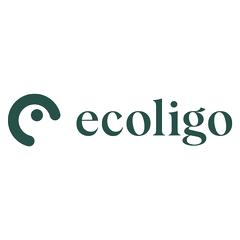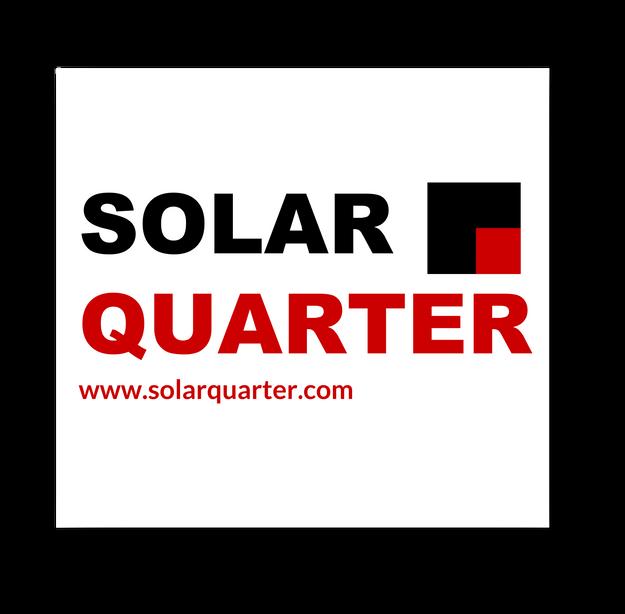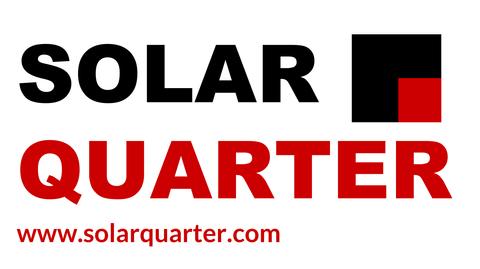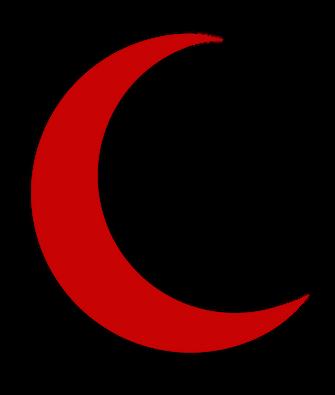


































































We have deployed more than 100GW around the globe by H1 2022 and in africa we anticipate having a 20% market share and at least 25% growth compared to 2022.
This year we have launched GFI(Gapless Flexible Interconnection) Technology
JA Solar has always adhered to the product design concept of “customer oriented” and we have developed a wide range of products for residential, commercial and utility scale PV projects application
DeepBlue 3 0 series have been widely used in different applications across Africa effectively reducing the LCOE and increasing customer revenue
Tell us about the recent key developments at JA Solar this year.
In recent years, demand for high power and high efficiency modules has been growing across the global PV market and Africa has seen larger wafer sizes roll out i e 182mm & 210mm wafer modules As a company, we have developed DeepBlue 3 0 series modules that are built using 182mm wafer. DeepBlue 3.0 integrates the advantages of multiple high efficiency and low degradation technologies including the high efficiency cell technology PERCIUM+, and Ga doped silicon wafers with great performance in reliability, conversion efficiency, and power generation Designed in configurations of 54 cell, 72 cell, 78 cell and module efficiency above 21 3%, the DeepBlue 3.0 series have been widely used in different application across Africa effectively reducing the LCOE and increasing customer revenue Also, we have launched our new DeepBlue 4 0X, an improved version of the n type series using our own BYCIUM+ cell technology based on the 182mm low oxygen wafers with 25% cell efficiency

Being a leading producer of PV modules, please tell us how your PV modules are best suited to the Eastern African region.
JA Solar has always adhered to the product design concept of “customer oriented” and we have developed a wide range of products for residential, commercial and utility scale PV
projects application. Our DeepBlue 3.0, DeepBlue 3 0 pro and DeepBlue 4 0X product series with advantages of stability, reliability, high efficiency, cost advantage in the manufacturing part, and high compatibility with the system have been fully verified, and we are offerings our customers a new choice of high quality and high power modules
The Eastern Africa region has been hailed as a prime location for solar energy development as it experiences very high levels of solar irradiation throughout the whole year. However in terms of energy access, the region has the highest share of unelectrified inhabitants in the continent Even those that are fortunate enough to have access to electricity most often experience a service that is unreliable and expensive These two factors are the main drivers for the development of solar energy systems in the region A study by IRENA puts East Africa ahead of other regions on the continent with a potential of 220 petawatt hours (PWh) per annum for solar PV
Despite all this potential in East Africa, solar still contributes less than 2% of East Africa’s electricity mix Hydro leads the way at about 54% and hydro’s share is still growing significantly, followed by natural gas at about 14%, then geothermal at about 12%. In order to increase the Solar mix, the East African nations have implemented a number of policies and incentives for Solar PV such as an import duty exemption, reducing import duties to 0%, and the removal of value added tax on solar products
This year we have launched GFI Technology GFI stands for Gapless flexible interconnection and in this technology, a round ribbon and special cushion design are applied to realize gapless connection between cells and improve module efficiency, deal with mechanical stress at cell connections and eliminates micro crack problem We are using this new technology in our new DeepBlue 3 0 pro and DeepBlue 4 0X
Please tell us what milestones you are planning for the next year.
Despite of higher freight costs and COVID 19 impacts on the continent, we have deployed more than 100GW around the globe by H1 2022 and in africa we anticipate having a 20% market share and at least 25% growth compared to 2022
We believe there is great potential for Solar PV development in the region, and would promote the application of solar PV with our premium products and services

We are using this new technology in our new DeepBlue 3.0 pro and
What have been some latest technological advancements at JA Solar?
Anything else you would like to highlight?

Founded in the year 2012 and headquartered in Nairobi, Kenya, the company boasts a decade of delivering specialized services in East Africa and across the African region

Amotech Africa has enjoyed enormous growth over the years and is today an official distributor of over 20 brands in the test and measurement industry
As a company, our ethos is based on walking the journey with every client making sure we guide them on the best solution that meets their specific needs
metering and infrastructure, IoT, biomedical and X ray testing solutions Our services include but are not limited to, power quality analysis, Tan Delta testing repair and calibration services leasing of equipment, and infrared thermography Amotech Africa also offers electrical contractor on site services having consistently attained the highest level of EPRA certification in Kenya
In the spirit of going green, Amotech Africa recognizes the importance of solar energy in promoting sustainability Through our partnership with Seaward Solar we provide solar PV testing solutions that can measure up to 1500V
The Amotech Africa calibration lab offers support to clients across Africa for calibration, maintenance and repair of test equipment The scope includes AC/DC, pressure, time, mass and volume
Amotech Africa is the leading provider of premium test and measurement solutions in the region The company specializes in the provision of tools and measurement equipment, technical services, repair and calibration services. To ensure client satisfaction Amotech Africa offers training and support on all their equipment Founded in the year 2012 and headquartered in Nairobi, Kenya, the company boasts a decade of delivering specialized services in East Africa and across the African region To date, Amotech Africa has a presence in Uganda, Tanzania, DRC, Malawi, Zambia, Burundi, Ethiopia, Rwanda, Cameroon and Nigeria. Having started as the sole distributor for one of the leading test and measurement manufacturers globally, Amotech Africa has enjoyed enormous growth over the years and is today an official distributor of over 20 brands in the test and measurement industry
As a company, our ethos is based on walking the journey with every client making sure we guide them on the best solution that meets their specific needs We have a deep understanding of the African environment and can offer expert advice as well as training to ensure that each client gets maximum value for their investment and gets it right from the beginning.
We also have a team of technical sales engineers who have specialized in various areas and solutions and hence are able to guide and support every client with their unique need(s)
We work with renowned premium brands that
customers
solutions
quality
I am grateful to report that after months of hard work and dedication, we are now fully operational in Tanzania with an office in Dar es Salaam and a third office in Kinshasa, DRC Having a physical presence and our representatives in these countries have enabled us to offer better support to our clients and be more responsive to their unique needs. We welcome clients to visit our physical office and get to interact with us Our growth plan for the next year includes cementing our footprint in the region by expanding to many more markets Besides aiming to maintain our position as the leading test and measurement provider, we are venturing into the Internet of Things (IoT) which plays a complementary role in helping to navigate the test and measurement field by prompting actions and acting proactively on data and trends We have also introduced gas detection solutions that aim at reducing the number of deaths in workplaces through our partner Industrial Scientific
The world has gone and continues to go digital, in line with this we are and shall continue to introduce smart solutions based on cutting edge technologies such as GPS monitoring of cables, transformers and so on to enable our clients to protect their assets so that they can serve them more efficiently and for longer

Amotech Africa
a wide range of solutions to industry players,
from electrical test and measurement solutions, mechanical applications, process flow and instrumentation
safety
solar equipment
Our

We as Jinko have gone a notch higher to give more value to the market by providing new technologies (TopCon) which guarantees higher efficiency and value for investment
We would want to make ‘good quality’ a standard in the region and make more people build more trust in solar.
We’ve for the past two years seen enormous acceptance of our energy storage solutions in the region and we’ve also managed to solve a number of community challenges by providing our ESS solutions in the region
What are Jinko Solar's offerings for the region and their specialties?
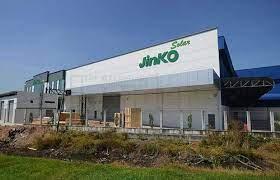
Jinko is no doubt the leading solar PV module supplier in the region and also globally We’ve been the only module supplier to lead in global module shipments in four years in a row We have also recently added PV+ solutions to our portfolio These PV+ Solutions include; Energy storage systems (ESS), Solar water pumping, building integrated PV (BIPV), solar street lighting, and associated accessories. We so far delivered a couple of our energy storage solutions to a number of our clients in the residential and commercial & industrial space in Sub Saharan Africa
What do you have to say about the module pricing trends in the East African region?
For the past quarter, the module prices have been a bit stable as compared to the variability in 2021 In as much as in East Africa pricing is cut throat making it a key component, we as Jinko have gone a notch higher to give more value to the market by providing new technologies (TopCon) which guarantees higher efficiency and value for investment
Logistics has been one of the biggest challenges in the PV industry for the past year As Jinko Solar we’ve maneuvered by negotiating with major shipping lines for dedicated spaces allocated to us on monthly basis and also fair pricing which act as an advantage to our customers

What is Jinko Solar's strategy for the next year for the region?
Our strategy for the next year is not only to be a leading supplier of PV modules but also to be a leading solution supplier in the region We’ve for the past two years seen enormous acceptance of our energy storage solutions in the region and we’ve also managed to solve a number of community challenges by providing our ESS solutions in the region We would want to make ‘good quality’ a standard in the region and make
How do you see the growth of the solar sector in the next couple of years?
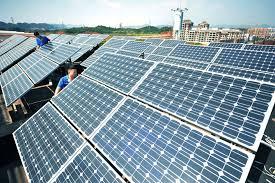
The solar sector has always been on an upward trend for the last 10 years We expect the growth to be rapid in the next couple of years In East Africa, Kenya has been leading in terms of adoption of solar PV We’ve also witnessed the increased acceptance of solar in Tanzania and Uganda and we expect that the solar market share for the region is going to increase in the next couple of years The main driver being the improvement in technology, Levelized Cost of Energy (LCOE) for solar has proved to be very competitive compared to LCOE from other renewable and non renewable energy sources Good to note also is that there is good awareness of the trends of PV technology in the EA market.
Mono PERC is now a mainstream technology for the past 4 years and we expect that for the next few years, TOPCON n type modules would take over Mono perc owing to its advantages with regards to enhanced warranty, temperature coefficient, good degradation and also higher
What are some challenges you are facing currently and how do you overcome them?
We’ve been the only module supplier to lead in global module shipments in four years in a row.
Our strategy for the next year is not only to be a leading supplier of PV modules but also to be a leading solution supplier in the region."

We started expanding our services in East Africa and now have projects in more than 15 countries on the African continent
We offer a monitoring solution that is compatible with both solar and water systems and independent of the system type and size
There is a huge potential for artificial intelligence, which can help provide predictive maintenance
On the African continent, there often is a strong link between solar and water. Many solar companies in Africa also work in water pumping and vice versa Yet, the solutions for monitoring these systems are completely different and often not sufficient We offer a monitoring solution that is compatible with both solar and water systems and independent of the system type and size
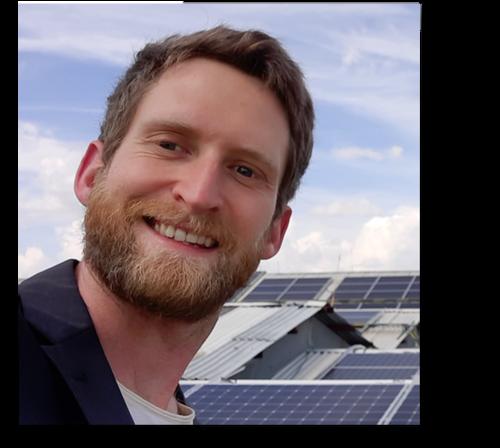
There is a huge potential for artificial intelligence, which can help provide predictive maintenance This will especially be interesting for projects that are located remotely and where maintenance is expensive due to long travels Also, this will increase plant efficiency and system uptime
Our company EcoPhi is a remote monitoring and control provider, but our journey started as an EPC for solar and water systems in Ethiopia During our time as an EPC, we have discovered that many solar and water systems lack a proper remote monitoring solution We had difficulties managing and operating the plants, so we decided to develop our own remote monitoring and control system. As we saw an increasing demand for these solutions, we have completely shifted our company focus to that new business field We started expanding our services in East Africa and now have projects in more than 15 countries on the African continent
We have three monitoring boxes for the different system sizes and complexity. This way we can efficiently monitor small and simple but also larger or more complex systems All boxes are plug and play, which makes installation extremely easy and fast On the cloud platform, we have several features like fleet management, analyses, reporting, alarms or exports
One key advantage of our solution is that it can be customized to all the stakeholders involved in the projects, meaning that we can provide several dashboards, reports or alarms for the different stakeholder groups This way, different teams and external partners such as banks or funding organizations can be provided with the s
We will expand our services in more countries in Africa and we are currently getting new distributors on board to be able to provide our systems faster At the end of next year, we are planning to have projects in more than 25 countries on the continent
We offer all in one remote monitoring and control solutions for solar and water systems. All in one means that we have both the monitoring devices that are easy to install and compatible with most of the common brands and also the software to be able to visualize and manage the systems This enables EPCs, operators and O&M service providers to manage all their systems with one central solution
For energy audits and system sizing, we have a special solution that enables companies to create real time load profiles and helps to quickly analyze the data to be able to properly size a system This can help for sizing C&I systems or when replacing generator powered systems with solar

What are your product offerings in the African region?
We offer all-in-one remote monitoring and control solutions for solar and water systems.
Kindly introduce us to your company and its journey so far
Could you give us the key highlights of your remote monitoring solutions?
What are some tech trends we are likely to see in the region in the coming future?
What is your growth plan for the next year?
We started expanding our services in East Africa and now have projects in more than 15 countries on the African continent

ENGIE Energy Access continues to Deliver Life-changing, Affordable, Reliable and Sustainable Energy Solutions with Exceptional Customer Experience.

We have connected 1 5 million households to clean, solar energy, in turn impacting 8 million lives. We have plans to penetrate further into our existing geographies through innovative models to help us reach last mile customers more efficiently and effectively Our strategy has always been to find affordable but also reliable and high quality products
How has the year 2022 been so far at Engie? What have been some key developments?
2022 been a challenging yet rewarding year and we are definitely on track to reach our goals ENGIE Energy Access has been able to live up to its mission to Deliver Life changing Affordable Reliable and Sustainable Energy Solutions with Exceptional Customer Experience So far, we have connected 1 5 million households to clean, solar energy, in turn impacting 8 million lives We enjoy a very high level of customer satisfaction: 92% of our customers are positive about our products and services We have also installed over 45MW of solar capacity to date.
We continue to accelerate by integrating our SHS and mini grid businesses while rolling out our upgraded product range and digital platform We have launched our new Solar Home System brand “MySol” in all 9 countries where we operate and continue to provide “Best Solar, Best Life” to our customers. Our business continues to impact 12 SDGs through providing energy, including poverty alleviation, good health and wellbeing of our customers, provision of quality education, and promoting gender equality, just to mention a few
What is the outlook of ENGIE Energy Access in the East Africa solar segment by FY 2023? What are the s cess is taking to m goal for the
EEA has a positive outlook for East Africa We are present in 4 countries in East Africa (Kenya, Uganda Tanzania and Rwanda) and have a strong ambition to improve access to energy in these countries
We have plans to penetrate further into our existing geographies through innovative models to help us reach last mile customers more efficiently and effectively, optimize and scale our energy products both up and down the pyramid, and expand “beyond energy” to help serve other essential needs of our customer base and continue to develop strategic partnerships with key organizations that share our mission and values
Can you please give us a brief overview of Engie Energy Access’ Off grid solar project outlook in the East Africa region? What is your view on different governments' policies on small scale off grid and mini grid solar projects in the East Africa region? How green financing could boost East Africa’s off grid solar market?
Overall, government policies are still favorable But we definitely believe there is room for more collaboration with East African authorities to foster a regulatory environment that will trigger growth through adequate policies
Further subsidies are needed with regard to importing duty exemptions, as well as VAT reliefs This will enable us to lower our product costs, making our off grid solar solutions even more affordable for our customers We also value a business environment that is efficient, understandable and consistent, to provide us with the confidence to make strategic investment decisions. We are pleased to have seen progress in this area and commitments from governments to support.
A combination of capital from private investors, impact funds, and multilateral funds is needed in order to reach the amount of funding necessary to realize the energy transition and meetSGG7 in Africa We have seen an increase in grant and funding opportunities not only in East Africa but also in other regions of Africa Countries like Mozambique have vast opportunities in Grants and Funding for both Minigrids and SHS so this is a positive evolution for the sector
What would be your choice between large format high power P type and N type solar modules for East Africa's off grid solar plant and why? What is the technological advancement observed in off grid solar inverters (with & without battery) in recent times?
Our strategy has always been to find affordable but also reliable and high quality products
Recent technological trends have seen more p type PV panels in the market because they are of lower production cost compared to n type, however n type solar cells will give much better efficiency in the end, making the opportunity for longer lasting products more attractive The segmentation of PV panel technology can as well be done at the geographical level, where some markets with short term needs can opt for p type with the expectation of sooner grid expansion to those areas, whereas a more long lasting product approach can be adopted for other less grid expectant markets.
The choice of PV panel type may also become important depending on the nature of the project to be executed; where for larger projects such as Mini grids, an approach towards n type panels maybe considered, compared to more decentralized solar home system solutions which are sold to individual household customers in more interior areas where a p type panel approach maybe more preferred
Other recent technological advancements have mostly been influenced by the shortage of electronic components needed in the assembly of solar charge controllers and inverters in the market This has affected the availability of certain MCUs and Modules needed for sub assemblies of critical parts of solar products
This has pushed many companies to consider alternative components for use in their products, search for spot buy market opportunities, and adapt to more medium long terms forecasting in order to mitigate the effect
This approach can be costly to the organization, as it constantly requires commitments to critical supply chain and R&D resources
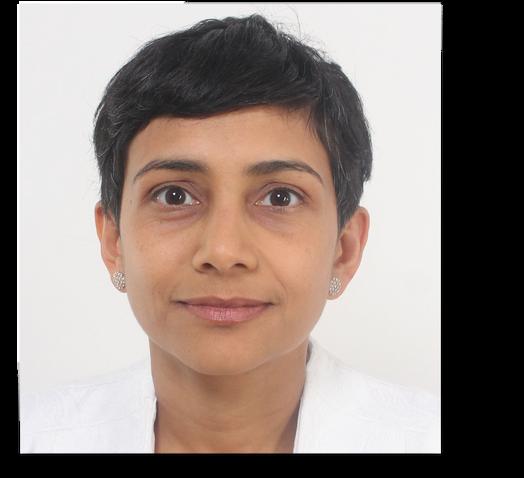
Kenergy’s utility scale power project is able to supply power at an affordable price to KPLC, the local utility, enabling it to both reduce the power cost to consumers and reduce transmission losses in the region, which is far from other sources of generation. Kenergy is focused on the larger scale C&I developments where our developer and project financing skills are valuable BESS has a major role to play in the future to enable grids to incorporate increased variable renewable energy sources of power however BESS should not be used on an individual power plant level but at a system level
How has the year 2022 been so far at Kenergy? What have been some key developments?
It’s been a challenging year for the IPP business and positive for the large scale C&I business
The IPP business in Kenya has been stalled since the Presidential Task Force was implemented in March 2021, which is 17 months ago. The recently issued White Paper which sets a vision for the incoming government suggests the IPP business could get started again, in particular for renewable energy sources, should the incoming government use this as a blueprint for the energy sector
Kenergy’s utility scale power project is able to supply power at an affordable price to KPLC, the local utility, enabling it to both reduce the power cost to consumers and reduce transmission losses in the region, which is far from other sources of generation
Electricity prices from KPLC, the utility, are likely to increase later in the year as the current subsidies for fuel and power costs are no longer sustainable
We will see a continued increase in the demand for C&I solar as this is cheaper than power from the utility Kenergy is focused on the larger scale C&I developments where our developer and project financing skills are valuable.
What is your outlook on East Africa’s large scale utility solar segment in the next 5 years?
The outlook is highly dependent on the incoming government’s policy for Kenya

I do believe that Kenya and the wider East Africa have enormous potential to become a large hub for manufacturing with net zero power given the renewable resources available to the region as per the White Paper and that this would have a major positive impact on socio economic growth.
The demand would have to be created and this is dependent on ensuring the correct policies are put in place by the government to attract investment to set up industries
Compared to Europe, which is seeing an electricity supply deficit with exorbitant electricity prices and Asia which has a higher carbon power generation content, we are in an excellent position to attract manufacturing by ensuring 95% + of our power is generated from renewable energy sources
What is your view on getting finance for a large scale utility solar project in East Africa?
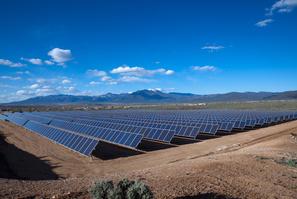
At the moment, it is trickier to attract debt financing due to the lack of clarity on energy policy. DFIs who are the main lenders for infrastructure projects in Kenya, are focused on other African markets and don’t wish to invest in debt until there is a clear signal from the government with regards to timelines for the issuance of letters of support to projects with signed power purchase agreements
Projects will need to be provided with a clear way forwards and bankable letters of support to secure the necessary debt financing
A major issue over the last year is the significant increase in the base rates for lending which could make it challenging to finance certain projects as the base rates continue to increase
How the recent BESS (Battery Energy Storage System) with Large format solar modules could change the utility scale solar landscape in East Africa?
BESS would strengthen the grid in areas that are far from generation sources and where there is insufficient generation BESS has a major role to play in the future to enable grids to incorporate increased variable renewable energy sources of power however BESS should not be used on an individual power plant level but at a system level At present, BESS is not as economically viable as a pure energy storage play based on electricity prices in the region, but more so for the provision of ancillary services in addition to some energy shifting across the day BESS can be very expensive if not used optimally hence the analysis of how much is required needs to be done carefully
In Kenya, we have done a high level study that suggests that due to the geographical diversity of the planned and existing wind and solar projects, the variability of the portfolio of projects is not as significant as many expect on an hour to hour basis The indicative study suggested that 95% of the variability could be dealt with by installing approximately 150MW of BESS
I do believe that Kenya and the wider East Africa have enormous potential to become a large hub for manufacturing with net zero power given the renewable resources available to the region


Renewvia financed, designed and built the largest private mini-grid, including distribution, in East Africa in Q2 serving over 15,000 residents in a refugee settlement in Northern Kenya.
The demand for reliable clean power is exponentially increasing, creating huge potential and opportunity
The proliferation of green bonds is improving the capital stack for utility scale and ideally will continue to increase in availability
Large format modules allow for further economies of scale and efficiency in design, driving BOS cost down
What is your outlook on East Africa’s large scale utility solar segment in the next 5 years?
Challenging and expansive Land control will always pose significant risks and complexities for utility scale in East Africa and throughout sub Saharan Africa but energy transition and reduced cost of solar are driving utility scale solar aggressively in the region The demand for reliable clean power is exponentially increasing, creating huge potential and opportunity
What is your view on getting finance for a large scale utility solar project in East Africa? How green financing could boost East Africa’s IPP market?
How the recent BESS (Battery Energy Storage System) with Large format solar modules could change the utility scale solar landscape in East Africa?

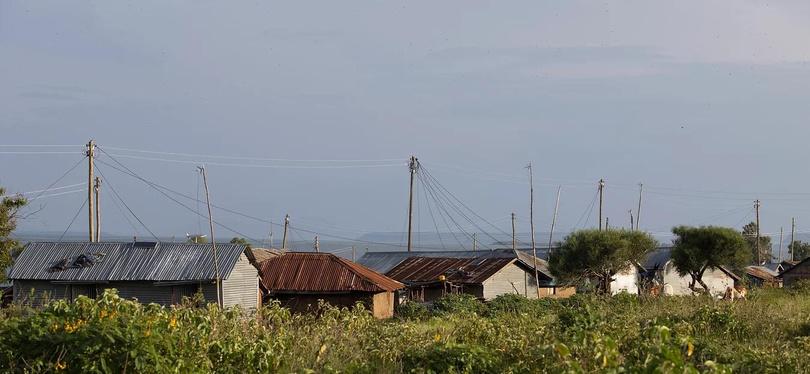
The cost of BESS is and has moved in the "right" direction for the last several years As the utility scale market continues to improve in the region, storage will be more applicable for those utilities requiring demand response to improve resiliency to subscribers and stabilization of the grid Large format modules allow for further economies of scale and efficiency in design driving BOS cost down
How has the year 2022 been so far at Renewvia? What have been some key developments?
2022 has been the most dynamic since the company's inception Renewvia financed, designed and built the largest private mini grid, including distribution, in East Africa in Q2 serving over 15,000 residents in a refugee settlement in Northern Kenya Renewvia is operating the facility and is already planning an expansion to ultimately serve the entire community of over 40,000 people. Separately, Renewvia's platform continues to expand in order to best operate the over 20 community mini grids developed over the last five years in Kenya and Nigeria
Investment grade credit and foreign exchange risk continue to require participation from entities providing guarantees in various forms, which increases the cost of the transaction/development Upward pressure on PPA prices in concert with lower than an acceptable risk adjusted yield must be navigated with each utility scale opportunity Obviously there are proven scenarios that can achieve this, but fewer moving parts are always more attractive. The proliferation of green bonds is improving the capital stack for utility scale and ideally will continue to increase in availability
What would be your choice between bifacial large format high power P type and N type solar modules for East Africa's large scale utility solar plant and why?
N Type Panels are preferred due to efficiency and propensity to provide a higher yield Developers focused on performance and lifespan rely on N type panels' cost benefit.
"Renewvia is operating the facility and is already planning an expansion to ultimately serve the entire community of over 40,000 people. Separately, Renewvia's platform continues to expand in order to best operate the over 20 community mini grids developed over the last five years in Kenya and Nigeria."

JA Solar Holdings Co , Ltd, founded in May 2005, is a world leading manufacturer of high performance photovoltaic silicon wafers, cells, modules and PV power stations. With a module production capacity of 40GW from 12 global manufacturing plants, JA Solar is ranked among the top three tiers 1 PV manufacturer for several consecutive years with a cumulative global shipment volume of 103GW as of H1 2022 JA Solar has been well received on its home turf and abroad, being listed on Fortune China 500 and Global Top 500 New Energy Enterprises
JA Solar's global market share reached 14% in 2021 Specifically, its share in established markets continued rising, including Europe at approximately 18% and China at approximately 19%; in emerging markets JA Solar's share in 2021 scaled to a record high of 46% in Pakistan, 58% in Malaysia and approximately 40% in Israel. Moreover, it has also found new outlets such as Guyana in South America, Sierra Leone in Africa, Tahiti in Oceania, and Uzbekistan in Central Asia, contributing to steady business development across the globe As indicated in the PV ModuleTech report, JA Solar will become more competitive in the US market with the advancement of its global production layout
JA Solar has kept increasing its investment in scientific research to meet the evolving market demand and promote the technological iteration and upgrade of the industry As of the first half of 2022, JA Solar had been granted 1,178 patents for independent research and development. The average conversion efficiency of its mass produced Percium cells has reached 23 7% and that of n type cells has reached 25% Particularly, the Percium cell based DeepBlue 3 0 modules have attracted market wide attention around the globe since the first order was shipped in October 2020 By the end of June 2022, shipment of the product had amounted to 24GW And it has been applied in key global projects such as the Beijing Fengtai Railway Station rooftop PV project, the rooftop PV project of the UN Compound in Beijing, the world's largest integrated source grid load storage project in Ulanqab, Inner Mongolia, and the Uivermeertjes floating PV project in the Netherlands which is the second largest floating PV park outside of Asia
In May 2022, JA Solar launched the n type cell based DeepBlue 4 0 X module, which boasts a cell conversion efficiency of 25% and a maximum power of 625W Compared with mainstream p type modules, DeepBlue 4 0 X can reduce balance of system (BoS) costs by up to around 2 1% and levelized cost of electricity (LCOE) costs by 3.5% 5%, which can further increase the profitability of projects and create greater value for customers JA Solar's n type cell capacity is expected to exceed 27GW by 2023, making it one of the first enterprises to develop n type cells and put them into production
JA Solar is also promoting intelligent manufacturing by accelerating digital transformation During the production process, it has achieved meticulous quality control ensuring quality is kept on a short leash through it 24 hour real time detection and automatic warning system Taking JA Solar Yiwu manufacturing base as an example JA Solar realizes digital intelligence during the whole process from planning and production to logistics, enabling "visibility of the 7 day delivery process" of an order and ensuring precise control of production efficiency and product quality


On August 26, JA Solar released its 2022 semi annual report, which shows JA Solar's overseas shipments accounted for 67% in the first half of 2022 In recent years, JA Solar has continued to steadily expand its international reach, with overseas shipments consistently contributing 60% to 70% of total shipments JA Solar has now established complete industrial chains at home and abroad respectively based on its 12 manufacturing bases around the world, providing strong capacity lobal markets
The semi annual report shows that in the first half of 2022, JA Solar recorded a revenue of RMB28 469 billion, representing an increase of 75 81% year on year, and a net profit of RMB1 702 billion attributable to shareholders of the listed company, representing an increase of 138 64% over the same period of the previous year, showing an outstanding performance in the growth of operating revenue and net profit Moreover, the module shipment in the first half of 2022 achieved an increase of more than 50% (higher than the industry average) over the same period of the previous year
JA Solar has also been widely recognized for its solid performance inside and outside the industry To date, JA Solar has repeatedly been listed in the Global Top 500 New Energy Enterprises, Fortune China 500, China's Top 500 Private Enterprises, China's Top 500 Private Manufacturers, among others, and its rankings continue to climb

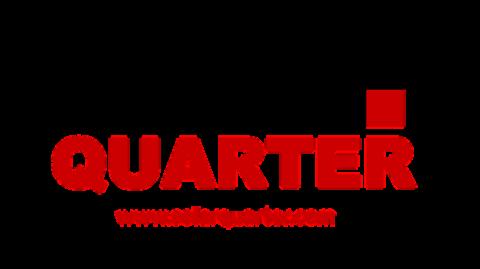

The introduction of carbon markets has been a key part of global climate change mitigation strategies. These markets allow high emitting countries and markets to trade their greenhouse gas (GHG) emission rights with low emitting countries. Africa is slow to adopt the carbon credit market, despite it being globally implemented This has resulted in socio political challenges that have impeded progress Although Africa is the least polluting country in the world, its rapidly growing economies and bold development goals mean that it will see a dramatic increase in energy consumption over the next decade The continent is still heavily dependent on oil and gas A carbon market will allow the continuation of the exploitation of these resources while directing the finance raised through this carbon market to the renewable energy sector.
Lack of political will, ineffective regulation oversight and the complexity of carbon markets are some of the main obstacles to the establishment and operation of an African carbon marketplace. Thus, effective and collaborative regulation is, therefore, crucial to the success and sustainability of Africa's carbon markets. It remains one of Africa's greatest challenges. The unpredictability of carbon credit prices makes it difficult for low income African countries with limited resources and technical capabilities to take part in the carbon market at fair terms
Despite the lack of carbon markets in Africa, some countries like Kenya, have made notable progress to reduce emissions through implemented policies and tax requirements. Kenya has made notable progress in implementing policies to reduce emissions in multiple sectors. Kenya has brought the concept of a carbon tax forward

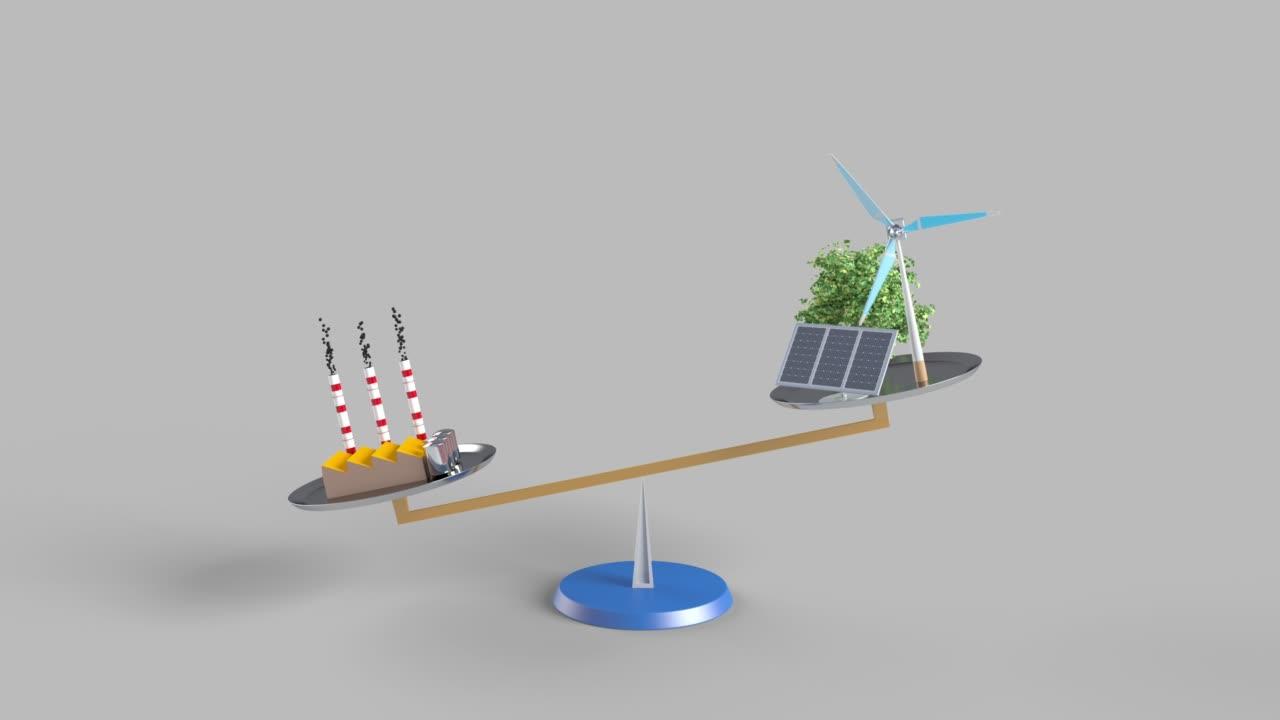
Recently, Kenya opened the Nairobi International Financial Center (NIFC), with the goal of attracting investment of more than $2 billion by 2030, and of setting up East Africa's first carbon exchange. Singapore's AirCarbon Exchange (ACX), will develop the carbon exchange and will trade certified carbon offsets to help Kenya to finance environmental projects, including reforestation and land restoration, as it seeks to meet its climate commitments.
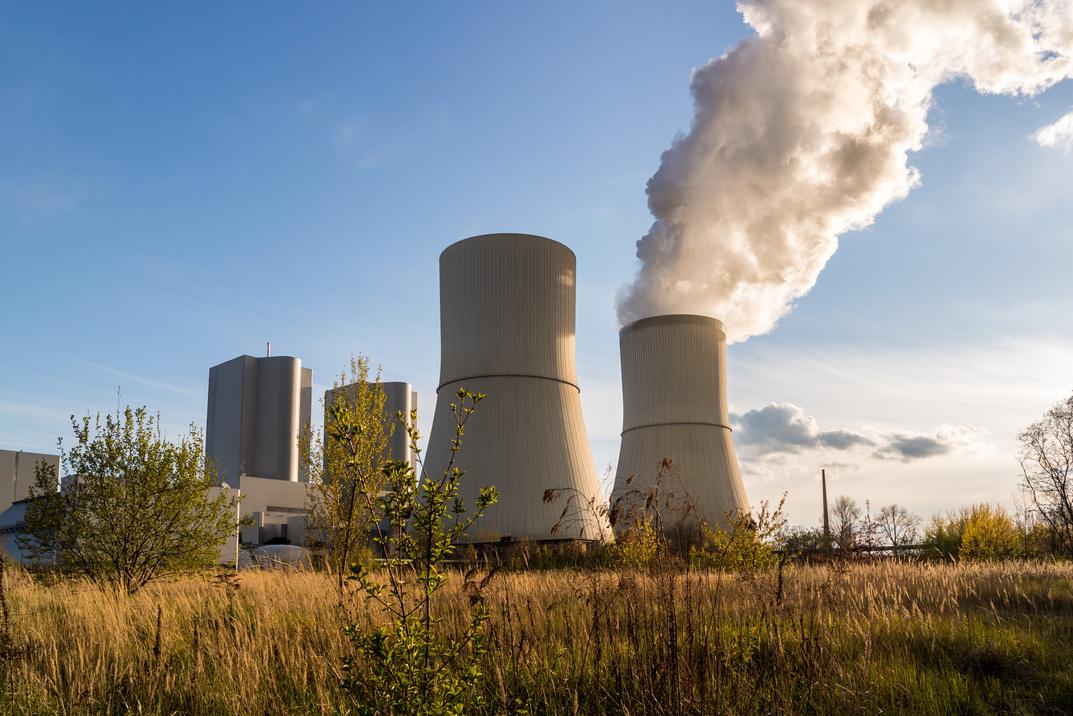

To support the introduction of a net metering regime for PV installations, Kenya's Energy and Petroleum Regulatory Authority (EPRA) has released a draft regulation. Kenya’s new net metering regulations will apply to PV systems up to 1 MW in size.
A Consumer who owns a Renewable Energy generator of a capacity not exceeding one megawatt (1 MW) installed primarily for self consumption and intends to enter into a Net Metering System Agreement with a distribution licensee or retailer; and A distribution or retail Licensee in the consumer’s area of supply
All residential, industrial and commercial customers that are provided by a distributor licensee or retailer can enter into a net metering arrangement subject to these Regulations as well as other applicable laws
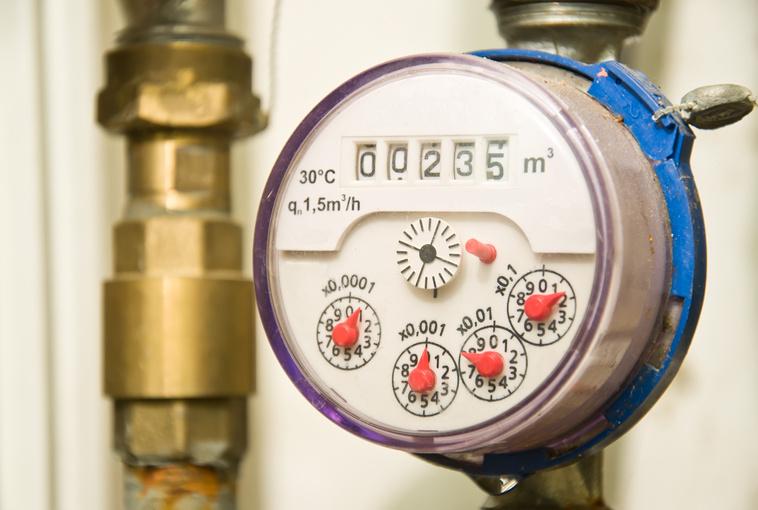
For a Prosumer who enters into a Net Metering System Agreement, the onsite installed capacity for a Renewable Energy system shall not exceed 1 MW capacity. It will also not exceed the maximum load demand in kW for the 12 months prior to the application for net metering.
It will help the country initially deploy around 100 MW of aggregated solar capacity, according to EPRA. The EPRA shall review the maximum aggregate generation capacity limit as given below.
If there are more than one distribution licensees, the proportion of the aggregate capacity to each licensee shall be equal to the specific load in that licensee's supply area compared with the national load. The distribution licensee shall determine, in accordance with the following, the aggregate generation capability of net metered facilities in each Licensee’s license area.
e electrical infrastructure equipment upstream of net metered facilities
Limits imposed upon the distribution licensee's network by its stability requirement. These limits are determined by technical analyses performed by the licensee, and by practical experience.
The owners of the solar arrays will need to pay grid interconnection fees and cover the costs of either unidirectional or bidirectional meter installations The approvals to operate under net metering will be granted within 60 days from the date of application
A Net metering facility must be capable of running in parallel and safely launching the delivery of power to the distribution network at one point of interconnection. A net metering facility must have a visible, lockable, manual, disconnected switch that is easily accessible by Licensee. This will prevent customers from back feeding de energized lines
Electricity supplied to Licensee shall be paid back to consumers with a credit per unit exported during a billing period Each exported unit shall give the customer a net metering credit of 50 % The Licensee shall compute the number of exported units, apply the discount, credit the Prosumer’s bill for the appropriate number of units (kWh) and bill the Prosumer for the remaining energy supplied by the Licensee in accordance with the applicable standard retail tariff schedule rates.
A Prosumer will be charged any non variable charges under the current retail tariff schedule on a monthly basis. This includes but is not limited to fixed demand or power factor penalty charges. Any unused credits shall be forfeited at the end of the Licensee’s financial year.
Ownership of any Carbon Credits accruing to the Consumer shall remain vested with him unless otherwise specified by any other laws of Kenya
Burundi's government has begun the implementation of a section of the proposed Rwanda Burundi electricity interconnection. The Rwanda Burundi interconnection project involves the construction of a 220 Kilovolt (kV)transmission line. It will run across Rwanda's Kigoma, Butare and Ngozi in Burundi The project will also include the construction and extension of sub stations Burundi will be constructing a 79 2km 220 kV transmission line It will run from Ngozi to Gitega A sub station of 220/30kV will be constructed at Ngozi, connecting to the existing distribution network The 110 kV substation in Gitega will also be converted to a 110/30kV substation by connecting two 110 kV bus bars at Ngozi and a set of 110 kV busbars The Rwanda Burundi interconnection project will see the line connected to Bujumbura's central control center


Recently, two tenders have been issued by the Central Electricity Board (CEB) of Mauritius to deploy a total of 140MW of solar plus storage capacity. The first procurement exercise was conducted by the CEB of the archipelago The CEB hopes to contract electricity through a long term power purchasing agreement (PPA), starting at 100MW of solar plus storage capacity In the second tender, the CEB wants to contract power, through a PPA, from a 40MW of the solar plus storage facility The government of Mauritius intends to increase the amount of renewable energy from the current level of around 22% to 35% in 2025

The Mauritius government, in light of the budget plan 2021 22, has stated its intention to adopt the following measures:
Set up a National Biomass Framework to remunerate bagasse at MUR3 50/kWh for all planters
The CEB will invest MUR5 3 billion over the next three years in an increase in battery capacity to 40 MW, gas insulated switchgear substations, and a 10MW solar farm at Tamarind Falls (Henrietta).
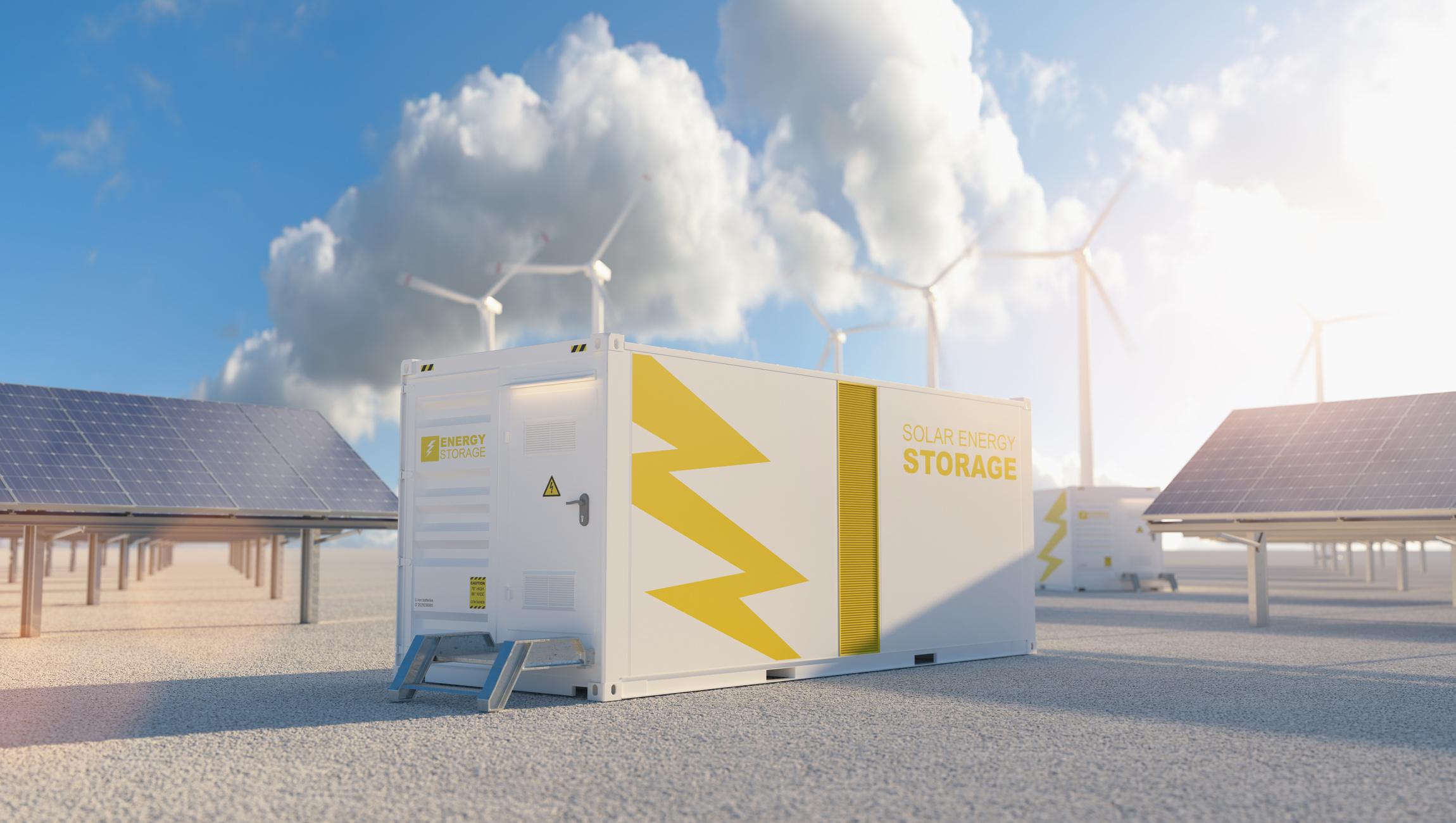

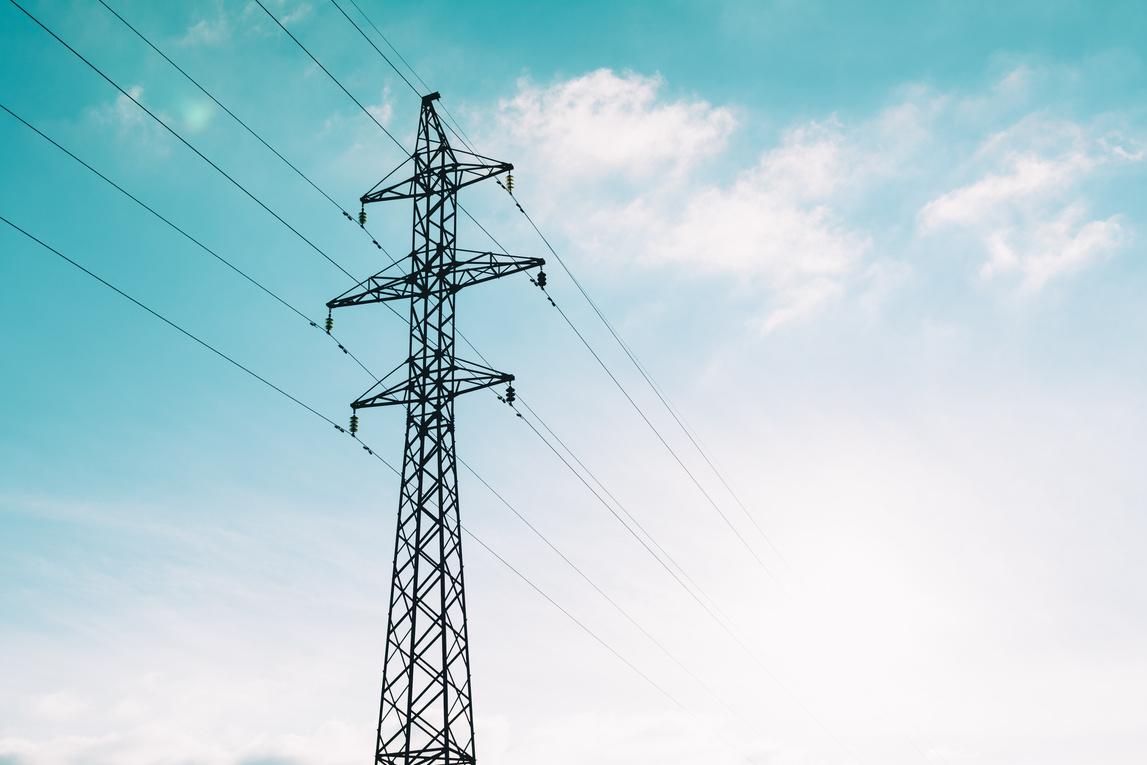
CEB will ask for proposals to construct an MUR 2.4billion 40 MW wind farm. Conducting a feasibility study for the implementation of offshore wind farms, mini hydro power plants, and the safe disposal of used solar panels or batteries. Incentives to use electric vehicles include a reduction in road tax and registration duty, as well as a duty free purchase Eliminating the 5% excise tax on electric cargo up to 180 kW that is used for transporting goods
Allowing electric vehicle owners to install a photovoltaic system of not more than 10kW to charge their vehicle Any surplus can be exported to the grid To purchase 25 electric buses to replace the National Transport Corporation's fleet
The African Development Bank (AfDB) Group approves a USD 5.5 million grant to fund phase two of the flagship Desert to Power energy project
The Board of Directors of the African Development Fund (ADF), approved a technical assistance grant of USD5.5 million to help kick start the rollout of the Desert to Power initiative in the Eastern Sahel regions countries of Djibouti Eritrea, Sudan, Ethiopia, and Sudan. This project will produce technical studies to develop regional solar parks and associated storage batteries near regional energy interconnectors. These high voltage cables connect the electricity systems in neighboring countries. A flagship initiative in renewable energy and economic development, Desert to Power is led by the ADF. Its goal is to increase socioeconomic development by deploying solar technologies on a large scale in the 11 Sahel countries.
The Renewable Energy Industries Association of Malawi (REIAMA) has lobbied the government to consider removing value-added tax (VAT) on solar energy products

Recently, The Renewable Energy Industries Association of Malawi (REIAMA) has lobbied the government to consider removing value added tax (VAT) on solar energy products to make them cheaper Removing 16 5% VAT on solar energy products would lessen the tax burden on rural people who desire to use solar lamps REIAMA asked the government like it had removed VAT and import duties on solar panels, batteries, chargers and inverters, in 2019, to remove taxes on lamps, TVs radios, fridges, water heaters, and radios powered by sunlight
The Major Renewable Energy Legislation Of Mozambique
Paris Agreement on Climate Change After the Paris Agreement was ratified, the country created a Partnership Plan for Climate Action. This plan aims to support the implementation of climate related policies and measures for greenhouse gas emission reductions. It is also known as the Intended Nationally Determined contribution for the period 2020 2025 This climate action plan outlines an ambitious mitigation commitment of reducing 76 6 metric tons of CO2 per year between 2020 and 2030 It also determines the development and financing for 2200 MW renewable energy projects Regulation on Reducing Carbon Emissions by Deforestation or Degradation This regulation allows the issuing, transfer, transacting, withdrawing, and transferring of emission reduction securities/carbon credit National Strategy for Electrification 2018 2030 This resolution was followed up by the launch of the Mozambique Electricity for All Project (also known as ProEnergia), which replaced the MOZA LIGA Project ProEnergia's primary goal is to provide energy access to all citizens by 2030 This will be achieved through the improvement and expansion of the transport, generation and distribution of electricity This is partly possible through diversification of the energy mix and the development of renewable energy
Kenya defines net metering rules for solar
To support the introduction of a net metering regime for PV installations, Kenya's Energy and Petroleum EPRA) has released a draft regulation. Kenya’s new net metering regulations will apply to W in size. This new regulation will allow the country to deploy 100 MW of solar power at first.
GHANA
Ministry of Energy

Interest in setting out the legal and regulatory framework for the Development Of Renewable Energy Industry In Ghana
Energy Commission

Interest in setting out the legal and regulatory framework for the Development Of Renewable Energy Industry In Ghana
Enoch Yeboah Agyepong, Director & Co-Founder, Renewable Energy Association of Ghana (REAG)


Outstanding Contribution To The Development Of Renewable Energy Industry In Ghana
Frederick Ken Appiah, Snr. Manager in-charge of Renewable Energy, Energy Commission

Outstanding Contribution To The Development Of Renewable Energy Industry In Ghana
Ghana Investment Promotion Centre

Interest in the promotion of Renewable Energy in Ghana
Ishmael Edjekumhene, Commissioner - PURC / Executive Director KITE
Outstanding Contribution To The Development Of Renewable Energy Industry In Ghana
Agnes Ansah Osei, Country Coordinator, PFAN Ghana
Financial Investment & Contribution To The Development Of Renewable Energy Industry In Ghana
Deutsche Gesellschaft für Internationale Zusammenarbeit (GIZ)

Technical & Financial Contribution To The Development Of Renewable Energy Industry In Ghana
Wisdom Ahiataku Togobo, BUI POWER AUTHORITY
Outstanding Contribution To The Development Of Renewable Energy Industry In Ghana


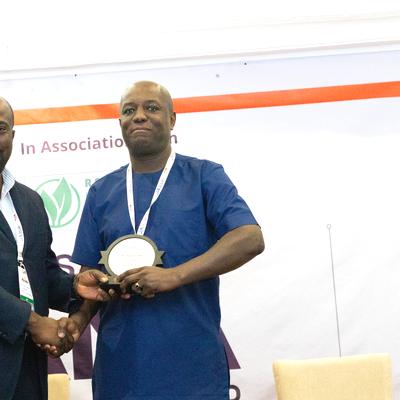
Excellence in Research & Development Leadership
Amevi Acakpovi, Engr. Prof.,Accra Technical University,

Best Solar Project of the Year
Solar Company of the Year - EPC
STELLA Futura Ltd
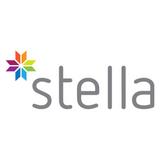
Excellence in Sales Thought Leadership
Cleopatra Ogharadukun, Head of Business Development, Africa, STELLA Futura Ltd

Best Solar Company of the YearDeveloper
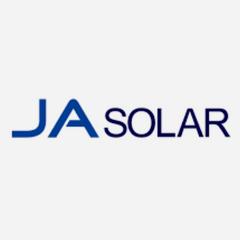
Best Solar Project of the Year Floating Solar Best Solar Technology of the Year - Floating Solar

POWER AUTHORITY
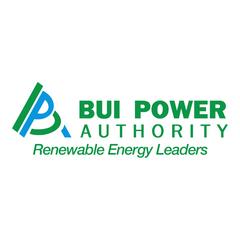
Best Solar Innovation of the Year Modules
Best Solar Technology of the Year - Modules

JA Solar
Solar Company of the YearFinance ecoligo GmbH CEO of the Year
Francis Asante , CEO STELLA Futura Ltd
